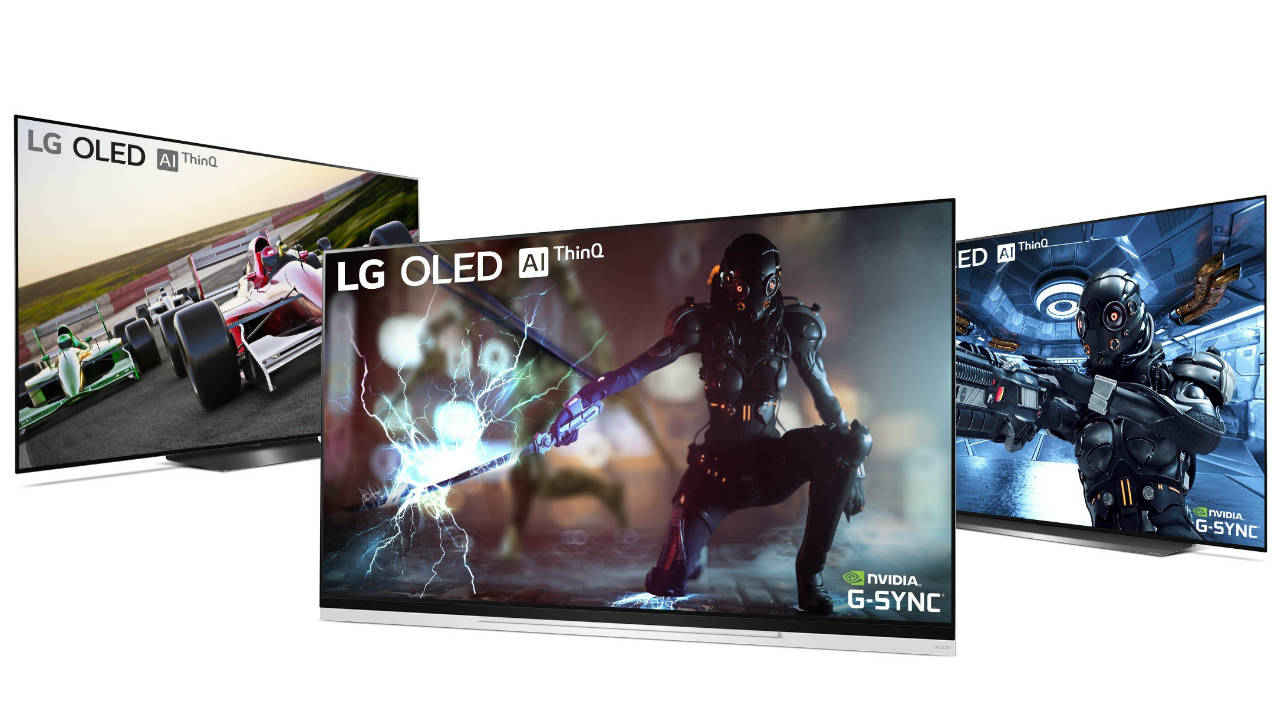LG 2019 OLED TVs start receiving NVIDIA G-Sync update, here’s how you can enable it
This makes LG’s 2019 OLED TVs the first TVs to support the technology.
The update is currently available in North America first.
Gamers need an RTX 20 series or GTX 16 series GPU to exploit the feature.

If you are a PC gamer looking to exploit G-Sync on your 2019 LG OLED TV, then there is some good news for you. LG’s 2019 OLED TVs, E9 (65 and 55 inches), C9 (77, 65 and 55 inches) as well as B9 (65 and 55 inches) will receive the update. According to LG, the update will come to North America followed by markets in Europe, Asia, Latin America, Africa, the Middle East, etc. before the end of the year.
 Survey
SurveyWith G-Sync support, gamers can experience a smooth, flicker, tearing or stutter free gaming experience on the TV. To be able to exploit G-SYNC you need to have a GeForce RTX 20-Series or GTX 16-Series GPUs.
“As the first TVs to offer NVIDIA G-SYNC Compatible support in the industry, LG is once again demonstrating its commitment to delivering the most advanced gaming experience,” said Sam Kim, senior vice president of the TV product planning division of LG’s Home Entertainment Company. “Our partnership with NVIDIA, the world’s premiere gaming hardware brand, is helping our 2019 OLED TVs set a new standard in gaming performance.”
Users of the TV can go into the settings and check if the software update is available. The software version is 04.70.12 for the C9 and E9 models, and version 04.70.04 for the B9 models. On the graphics front, users will need to install the latest GeForce Game Ready Driver via GeForce Experience or the NVIDIA website.
HOW TO ENABLE G-SYNC ON THE TV AND PC
- Once your TV and GPU are updated, connect the TV to your PC or laptop via an HDMI cable.
- Open the NVIDIA Control Panel. You can do this by right-clicking your desktop, then click NVIDIA Control Panel
- On the left of the window, select Display and then Set up G-SYNC
- Enable G-SYNC, and click Apply. You are almost done.
- Select the LG TV under the Display settings and change the resolution based on the capabilities of your GPU. You can choose between 2560×1440 @ 120Hz for a 40 to 120Hz Variable Refresh Rate range or 3840×2160 @ 60Hz for a 40-60Hz Variable Refresh Rate range.
- You can also enable Ultra HD Deep Color mode on the LG TV. Do this by going into the settings of the TV, then Picture Settings, Additional Settings, find the HDMI Ultra HD Deep Color toggle and switch it on.
- To enable HDR, open “Windows HD Color Settings” on your PC/Laptop. Here switch on “Play HDR Games and Apps”.
One thing to note is that Variable Refresh Rate (VRR) was announced as a function of HDMI 2.1, so how can HDMI 2.0 devices, like the NVIDIA graphics cards, take advantage of this? Well, if you aren't aware, the Xbox One X also takes advantage of VRR on the LG 2019 OLED TVs. According to AnandTech, “While HDMI-VRR was introduced as part of HDMI 2.1, the feature is an optional extension to HDMI and is not contingent on the latest standard's bandwidth upgrades. This has allowed manufacturers to add support for the tech to HDMI 2.0 devices, which is exactly what has happened with the Xbox One X and now NVIDIA's Turing video cards. Which in the case of NVIDIA's cards came as a bit of a surprise, since prior to the LG announcement NVIDIA never revealed that they could do HDMI-VRR on Turing.”
Another thing to note is that the next console generation, the PS5 and Xbox Scarlett are expected to take advantage of HDMI 2.1. So if you are in the market to pick up a TV, then the LG 2019 OLED TVs can be a consideration. You can check our detailed review of the LG C9 here.
Sameer Mitha
Sameer Mitha lives for gaming and technology is his muse. When he isn’t busy playing with gadgets or video games he delves into the world of fantasy novels. View Full Profile